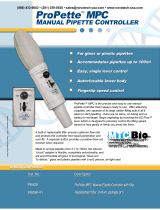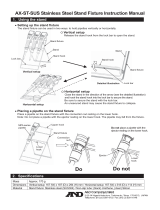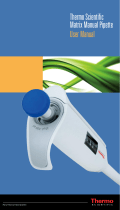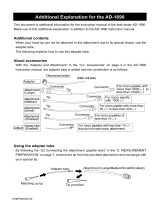MAINTENANCE
TROUBLESHOOTING
15
14
PIPETMAN® CLASSIC | USER’S GUIDETROUBLESHOOTING | PIPETMAN® CLASSIC
Leak Test
This test may be performed at any time to check
that the pipette does not leak, especially after
performing a maintenance or decontamination
procedure. If a pipette fails this test, replace
the O-ring and seal. After making sure that the
pipette is correctly reassembled, repeat this test.
P2 to P200 Models
1. Fit a PIPETMAN® DIAMOND tip.
2. Set the pipette to the maximum volume,
given in the specifications, and pre-rinse.
3. Aspirate the set volume from a beaker of
distilled water.
4. Maintain the pipette in the vertical position
and wait for 20 seconds.
5. If a water droplet appears at the end of the
tip, there is a leak.
6. If you see no droplet, re-immerse the tip
below the surface of water.
7. The water level inside the tip should remain
constant; if the level goes down, there is a
leak.
P1000 to P10mL Models
1. Fit a PIPETMAN® DIAMOND tip.
2. Set the pipette to the maximum volume
given in the specifications.
3. Aspirate the set volume from a beaker of
distilled water.
4. Maintain the pipette in the vertical position
and wait for 20 seconds.
5. If a water droplet appears at the end of the
tip, there is a leak.
Chapter 6
MAINTENANCE
Routine maintenance will help keep your pipette
in good condition, ensuring a continued high
level of performance. Maintenance is limited to
cleaning or autoclaving the parts specified under
Cleaning and Decontamination on page 18 or
to replacing the push button, connecting nut, tip
ejector, tip holder, seal and O-ring.
NOTICE
PIPETMAN P2 and P10 should
not be disassembled, so you
may only replace the push
button, tip ejector, dual position
tip ejector and its adapter.
With these pipettes if the tip
holder is damaged, the piston
may also be damaged. After
replacing any parts you should
verify the performance of your
pipette following the verification
procedure available on the Gilson
website (www.gilson.com). If the
pipette needs to be readjusted,
please contact your local Gilson
authorized Service Center.
Changing the Tip Ejector
1. To remove the tip ejector, keep the tip
ejector button depressed and pull down on
the flanged upper part of the tip ejector with
the other hand.
2. To refit the tip ejector, keep the tip ejector
button depressed, slide the end of the tip
ejector over the end of the tip holder and
push the plastic end of the tip ejector back
into the body of the pipette until it is gripped
firmly by the metal tip ejector rod.




















